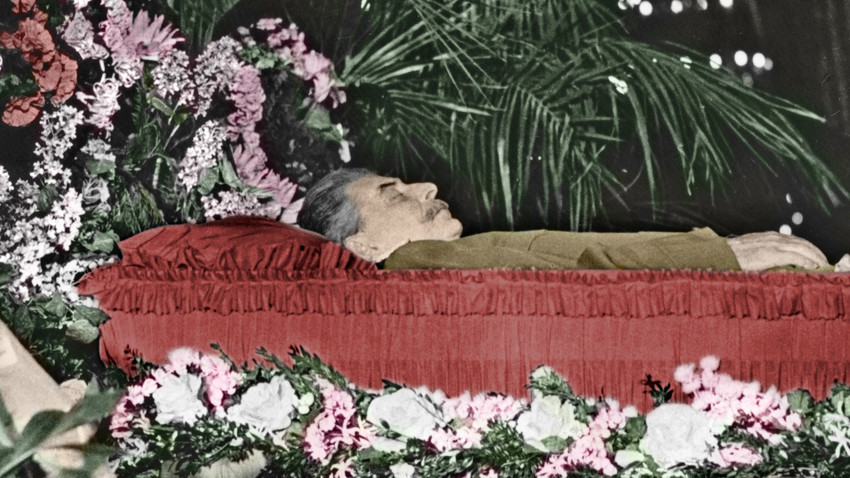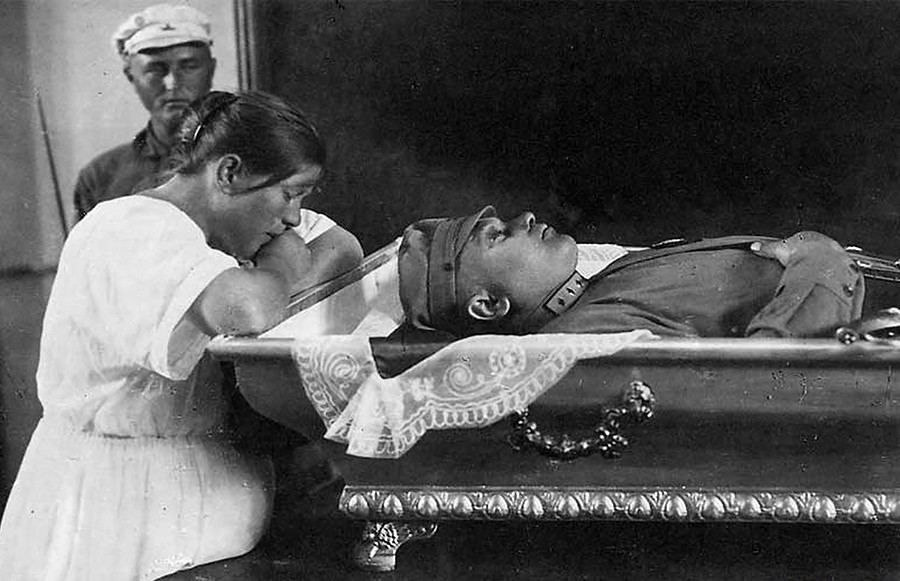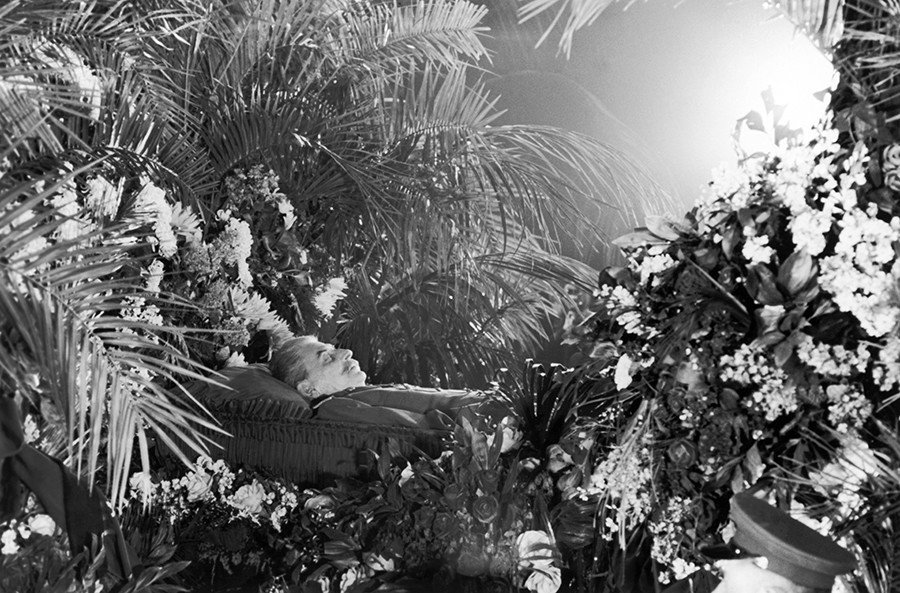
Joseph Stalin (as a mummy) lying in a coffin, 1953.
Getty ImagesEverybody knows that Vladimir Lenin, who led the Bolsheviks during the 1917 Revolution, has been “mummified.” Embalmed by Soviet scientists, he was put in the Mausoleum in the heart of Moscow and still serves as a tourist attraction (quite a controversial one).
There’s a lot of interesting stuff about how Lenin ended up like an Egyptian pharaoh: Starting from the very process of his embalmment to when his body was evacuated to Siberia during WWII. But it would be a mistake to think that the leader of the proletariat remains the only mummy in Russia. The stories of three others are just as interesting.

Nikolay Pirogov's body.
ukrinformSo skillful was Pirogov that “sometimes soldiers brought bodies with detached heads to him, hoping that the almighty doctor would sew them back and reanimate the dead,” KP.ru retells the popular legend. Pirogov also created one of the most detailed anatomical atlases of his time.
After this Russian “king of medicine” died, his wife Alexandra decided to “keep the body of my spouse imperishable, for me and the descendants.” Even the Orthodox Church approved of it with a special rescript: “For the disciples of Pirogov and those who succeed with his noble labor can see his bright image.”
David Vyvodtsev, one of Pirogov’s students, did the embalming – and it went so well that almost 140 years later Pirogov has barely aged. He

Grigory Kotovsky.
Odessa LifeMuch like Lenin, Grigory Kotovsky was associated mostly with the Revolution. A former bandit, through his cunningness, military skills, and luck he grew up to command a Red Army division in Ukraine and Moldova during the Russian Civil war. A controversial man, to put it mildly: “It’s hard to tell whether he was a natural-born criminal, or a political bandit or a defender of the oppressed,” historian Eduard Burda wrote.
Anyway, soon after the Civil war came to an end, Kotovsky was shot by his own adjutant. As the commander was highly popular, the authorities decided to embalm him and even invited the same person who preserved Lenin’s body to do it – anatomist Vladimir Vorobyov. After the successful embalmment, they put Kotovsky in a mausoleum in Podolsk (now Ukraine, near Odessa). Not as big as Lenin’s one, of course.
Unlike Lenin, Kotovsky was forced to leave the place of eternal rest. In 1941, when the Germans invaded Ukraine, they took the Red Army commander’s body out of the mausoleum and threw it away. Now, the remnants of Kotovsky (found after the war) are buried in an ordinary grave and his mausoleum stands empty.

Throughout his life as the leader of the USSR, Stalin was considered almighty, the fourth ring in the unbreakable chain of Communist leaders: Marx – Engels – Lenin – Stalin. It came as no surprise that after his death he would follow in Lenin’s footsteps and be preserved inside the Mausoleum. After Stalin died on March 5,
The experts who take care of Lenin’s body did their job well – and until 1961, the two Communist leaders were neighbors in the Mausoleum. Nevertheless, Stalin’s mummy was forced to move out – due to the anti-Stalinist campaign during Nikita Khrushchev’s rule. “Stalin’s betrayal of Lenin’s legacy, his misuse of power, mass repression against honest Soviet citizens… make it unacceptable to keep the coffin with his body in Lenin’s Mausoleum,” the official decision went.
So they took Stalin away from the Mausoleum and buried him near the Kremlin wall where it still lies. Vadim Milov, a scientist who used to work in the Mausoleum, suggests that the embalmed body may still be in a good shape. “The Soviet scientists sought to keep not only the body but
Russian history has many peculiar pages. For instance, check out our text on what it was like to live in Russia just 20-25 years ago.
If using any of Russia Beyond's content, partly or in full, always provide an active hyperlink to the original material.
Subscribe
to our newsletter!
Get the week's best stories straight to your inbox